Looks can be deceiving, but what you see is what you get with the Polish chicken breed. The chickens are eye candy with sweet and gentle personalities to match.
Luckily, looks are not all there is to this spectacular chicken breed. Learn with us all there is to know about the Polish chicken breed.
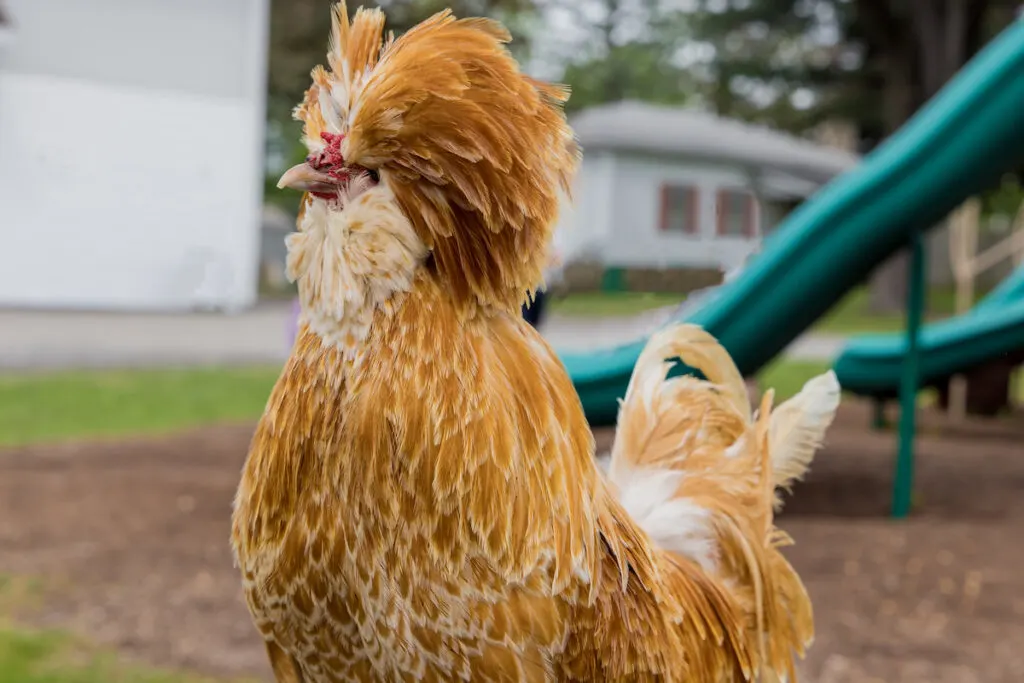
Table of Contents
History
The Polish chicken breed, also known as “Poland,” is a European chicken breed famously known for its eye-catching crest.
While the Polish chicken’s exact origin is unknown, breeders believe that the Asian Mongols introduced the chicken breed to Eastern and Central Europe.
Similarly, there is no clear origin of the breed’s name. But speculation dictates that the breed’s name came from its country of origin — Poland.
Or it could have come from the word “Pol” which is Middle Dutch for “head” referring to the birds’ crest or dome-shaped skull.
This is likely so, since the earliest accounts of the Polish chicken breed are from The Netherlands — paintings of chicken breeds resembling the Polish are seen from as early as the 15th century.
A century later, the Netherlands standardized and declared the Polish chicken as a pure breed. This led to extensive showcasing of the birds in Dutch and Italian paintings until the 18th century.
According to the American Poultry Association, the Polish chicken breed first arrived in the United States between 1830 and 1840.
In 1874, the first three Polish chicken variants entered the American Poultry Association’s Standard of Perfection. The association later accepted the remaining varieties in 1883, 1938, and 1963.
Initially, farmers and breeders revered the breed for its prolific egg-laying capabilities. This praise was, however, short-lived with the rise of superior egg-producing breeds like the White Leghorn.
Similarly, its unique appearance overshadowed its egg production capabilities, which made breeders desire the chicken more for their ornamental appeal than their egg-laying prowess.
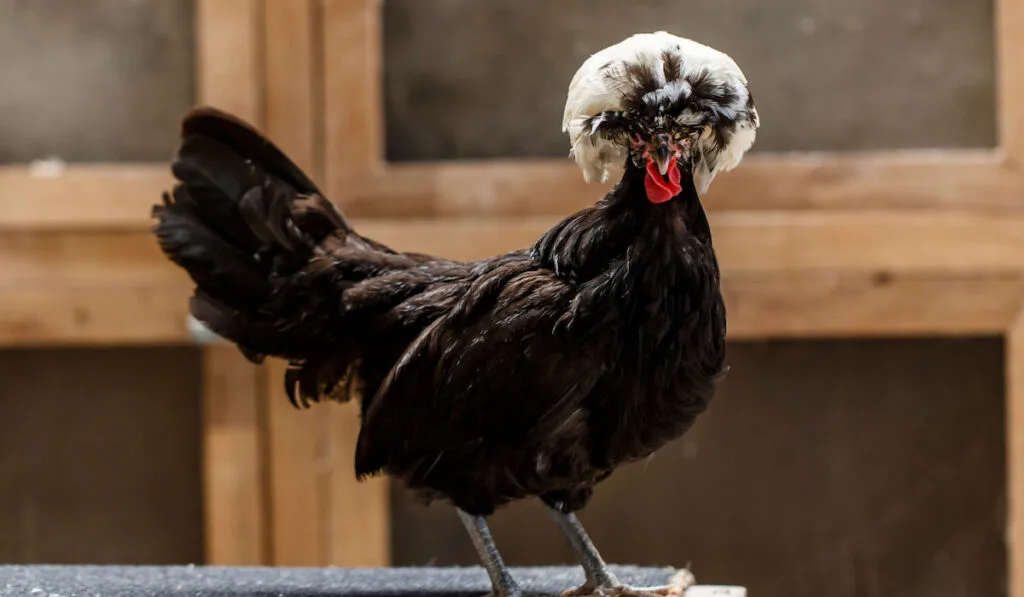
Appearance
Polish chickens are somewhat hard to miss thanks to their signature head feathers, which range from a neat pom-pom-like arrangement in hens to a wild and unkempt appearance in roosters.
Since their dome-shaped skulls support the crest, the feathers are prone to falling over the chickens’ faces and thereby obstructing their vision.
More often than not, the cascading head feathers will also hide the rooster’s V-shaped comb.
That said, the birds have long bodies with broad shoulders and a straight back, giving them an upright and elegant carriage that is great for an exhibition breed.
Their horn-colored bills blend harmoniously with their red bay eyes, comb, and wattles. They also have white ear lobes.
Polish chickens have wide-set legs with four toes each and without any feathering.
They have moderately long plumage that is closely knit to the body. Roosters also have pointy sickle feathers on their hackles and tails.
Depending on the variety, Polish chickens can also be bearded. In such cases, there is an abundance of feathering on the birds’ faces and heads.
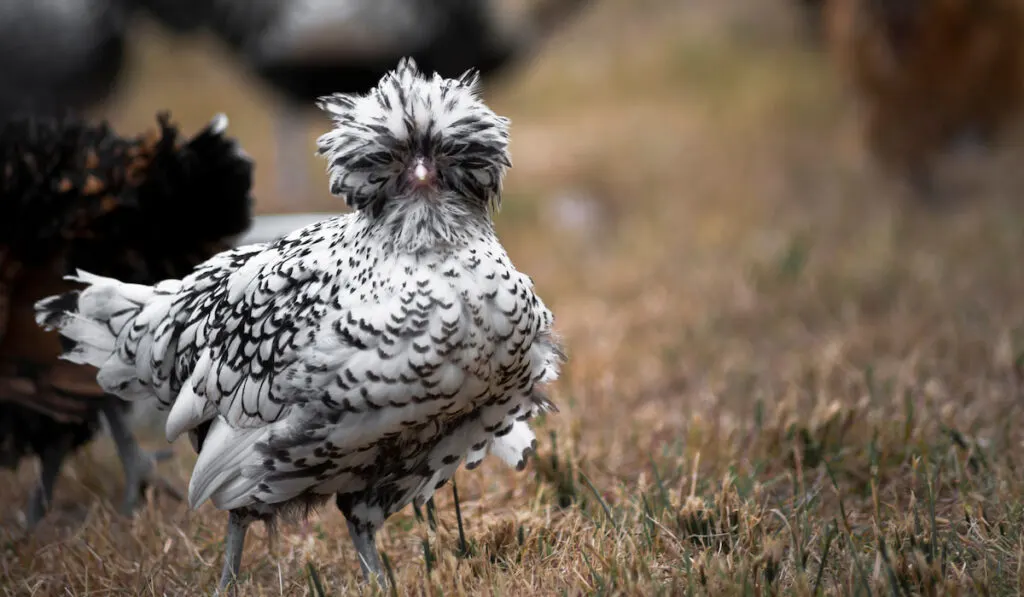
Size
Polish chickens are a standard breed that falls under the small size category. As such, mature roosters can weigh up to 6 pounds while hens weigh between 4 and 5 pounds.
The breed also has bantam varieties that can weigh up to roughly 29 ounces depending on their sex.
Egg Production
For a chicken breed specifically refined for exhibition, Polish chickens do a commendable job of consistently laying 3 to 4 eggs per week, making an average of 200 eggs annually.
The hens reach maturity after 20 weeks and lay small to medium-sized white eggs.
While it is not the best breed for egg production on a large scale, the Polish variety you choose will dictate the egg yield you will get.
Since the hens are rarely broody, it’s advisable to invest in an incubator if you are looking to grow your Polish chicken flock.
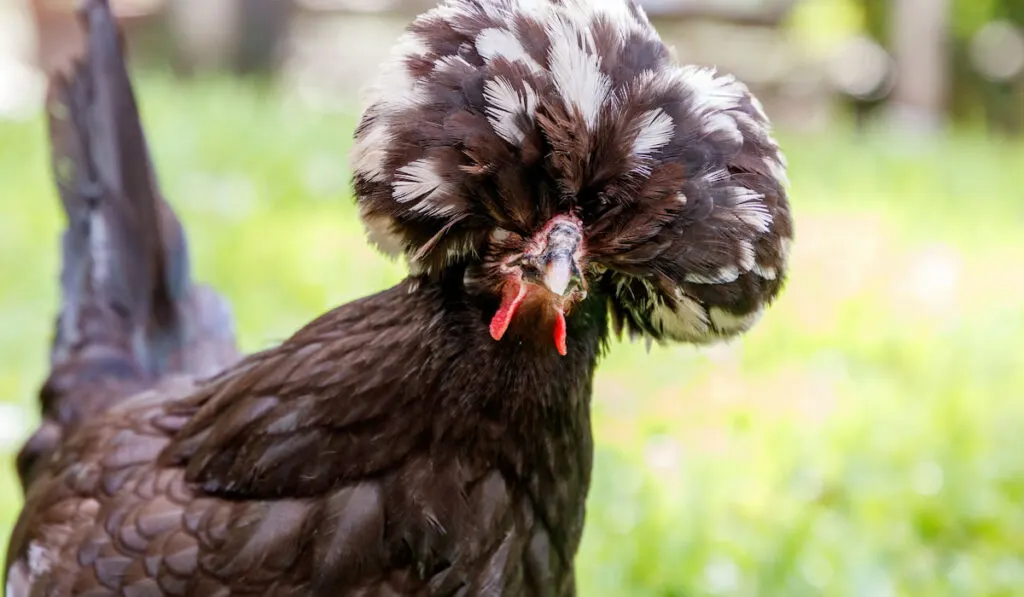
Varieties
The Polish breed is available in standard and bantam sizes, both of which the American Poultry Association acknowledges in their standards book.
The birds are categorized as a “Continental” breed with several varieties including:
- Non-bearded White-Crested Black
- Non-bearded White-Crested Blue
- Non-Bearded Golden
- Non-Bearded White
- Non-Bearded Silver
- Non-Bearded Buff-Laced
- Bearded Golden
- Bearded Silver
- Bearded White
- Bearded Buff-Laced
Tolbunt is another popular variety that American Poultry Association is yet to recognize. It is a stunning mix of brown, white, and black that will hopefully be recognized soon.
While there are numerous varieties and colors to choose from, the ones stated above are the ones that adhere to APA standards.
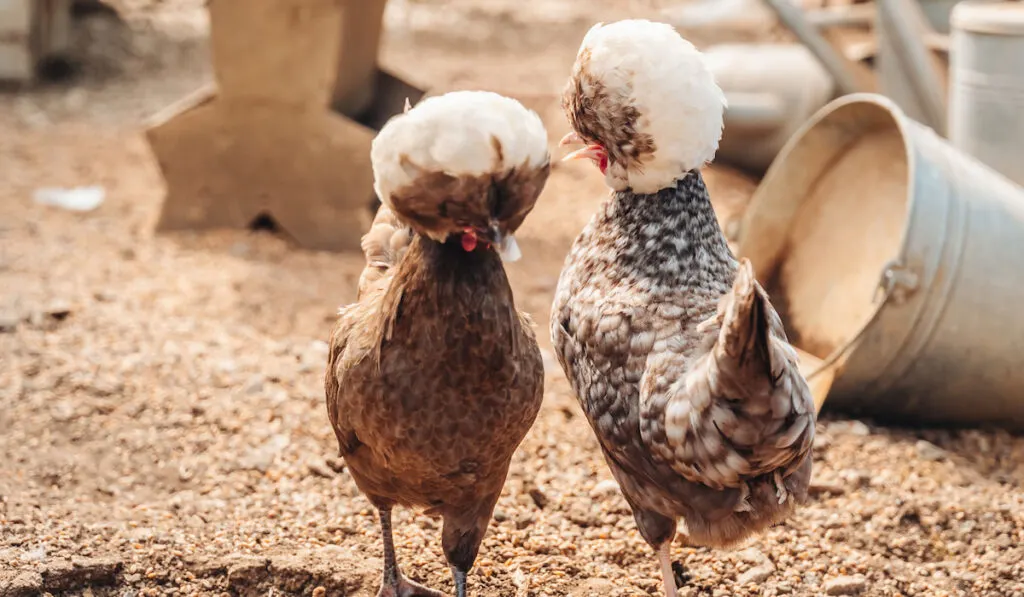
Temperament
Polish chickens are gentle birds with a friendly demeanor. This makes them ideal pet options, especially for children, but also predisposes them to bullying by other aggressive chicken breeds.
As a result, it is prudent to house them with other docile breeds. The last thing you need is a show chicken with missing feathers due to constant plucking.
Though Polish chickens are generally gentle, some Polish varieties can be nervous and erratic. This behavior is mostly associated with long head feathers covering their eyes, thereby affecting their vision.
With such varieties, consider regularly trimming their facial feathers to improve vision and reduce the risk of eye infections.
And calling out or whistling when approaching the birds as they forage will alert them of your presence.
Aside from these, Polish chickens are generally curious birds that love exploring. Since they can be too curious, it is better to keep them in confinement, which they do not seem to mind.

Lifespan
With proper care and attention, Polish chickens can live for more than 8 years.
Luckily, this only calls for:
- Proper nutrition
- Regular health intervention
- Proper shelter
- Good hygiene
However, there is always a risk of sudden death among Polish chicks. Since their head ridge is not completely knit together during hatching, pecking by adult chickens could lead to death.
To avoid this, only keep chicks with their mother for several weeks until the ridge knits completely.
Noise Levels
Apart from the regular laying songs by the hens and crows from the roosters, Polish chickens are generally quiet. They, however, love chattering to each other in low tones.
This quiet nature is yet another reason why Polish chickens make great pets, especially in urban settings.
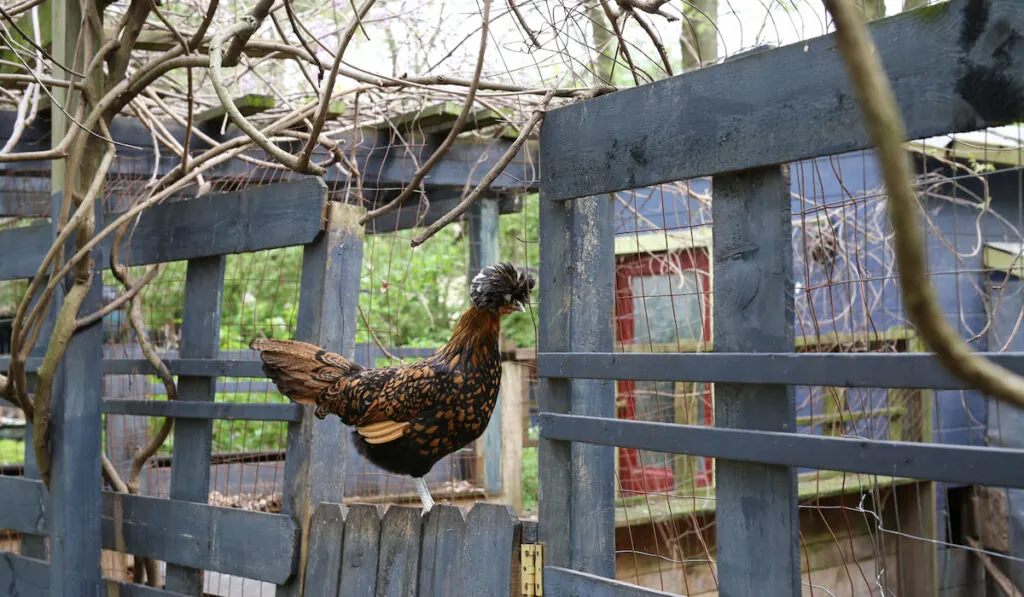
Housing
As is the case with other chicken breeds, Polish chickens require at least 4 square feet of coop space per chicken.
You can, however, get away with a little less housing space if your birds have more than enough roaming space outside or in a run.
While 8 inches of roosting or perching space per bird is the recommended standard, providing more allows your chickens to spread out freely during the hotter months of the year.
When it comes to nesting, the standard (12×12 inches) space will do for Polish hens.
Depending on how big your flock is, a ratio of one nesting box for every two to three birds ensures that all your hens have a space to lay their eggs.
Nutrition
As far as feeding goes, stick to the regular 16% protein feed for adult Polish hens during their laying season.
Only change this to 20% protein feed during the molt until most of the chickens’ feathers grow back.
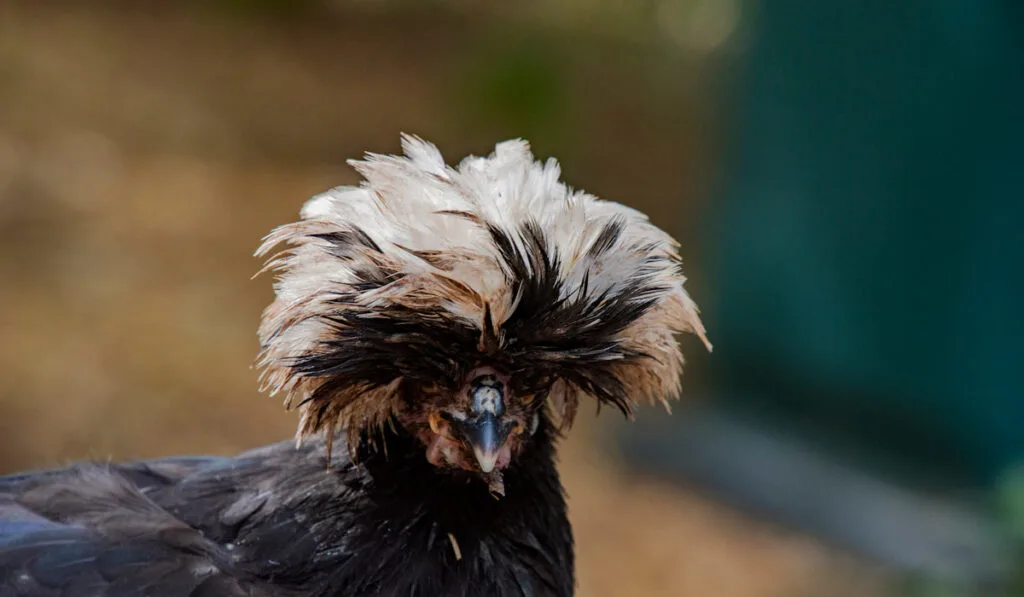
Common Health Issues
While Polish chickens are not necessarily a delicate breed, it is advisable to keep a keen eye on the chickens’ crest, especially during the colder and wet months.
Needless to say, thoroughly dry your Polish chickens’ crests every time they become soaked to prevent infections.
Similarly, consider trimming down the head feathers whenever you are not showing your chickens to maintain their sharp vision.
Other than these issues, you can expect the usual lice and mites, especially with bearded or muffed Polish varieties.
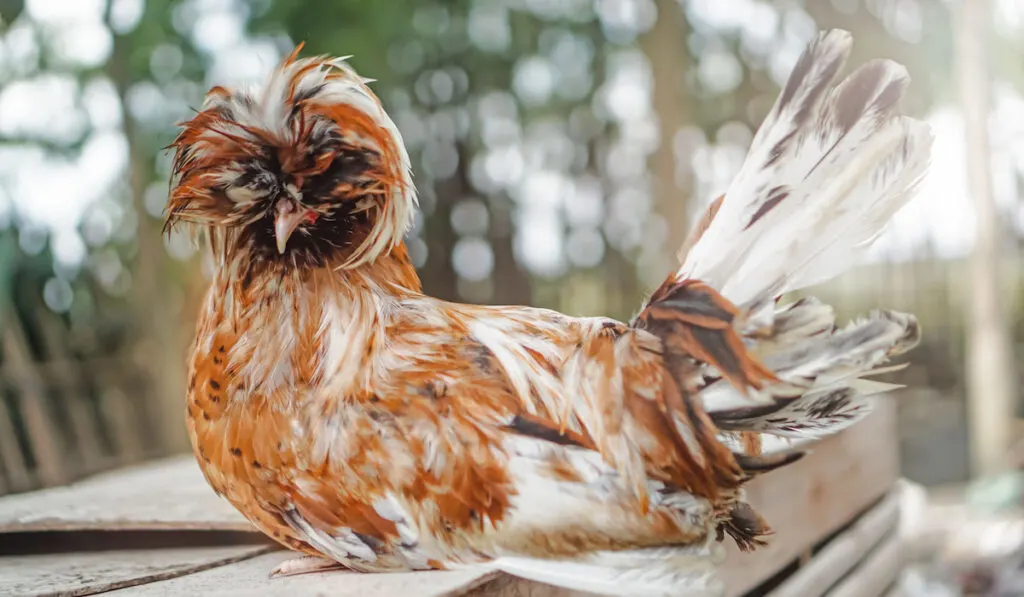
Hardiness
Polish chickens are a hardy breed that can tolerate most climates. However, as already stated, the breed doesn’t handle wetness well, hence the need to dry them when soaked.
To avoid this, breeders in damp winter areas move their flocks to draft-proofed enclosures. These birds generally prefer hot and dry climates.
Final Thoughts
Well-rounded chicken breeds don’t get better than the Polish breed.
Their unique looks effortlessly lend the breed to exhibition, as they easily catch people’s attention.
On the other hand, the breed is a decent egg layer that you can also raise for your subsistent egg production needs.
But most importantly, the Polish is a docile and gentle chicken breed that will give you immense joy as a pet.
There is no losing with this outstanding chicken breed, so why not give it a try?
Resources
- https://www.chickensandmore.com/polish-chicken/
- https://en.wikipedia.org/wiki/Polish_chicken#cite_note-Bassom_2009_107-5
- https://www.thehappychickencoop.com/polish-chickens/
- https://www.backyardchickencoops.com.au/blogs/learning-centre/breed-profile-polish
- https://livestockconservancy.org/heritage-breeds/heritage-breeds-list/polish-chicken/
- https://breeds.okstate.edu/poultry/chickens/polish-chickens.html?Forwarded=afs.okstate.edu/breeds/poultry/chickens/polish
- https://www.ecopeanut.com/polish-chicken/
- https://amerpoultryassn.com/accepted-breeds-varieties/
- https://pets.webmd.com/what-to-know-about-polish-chickens
